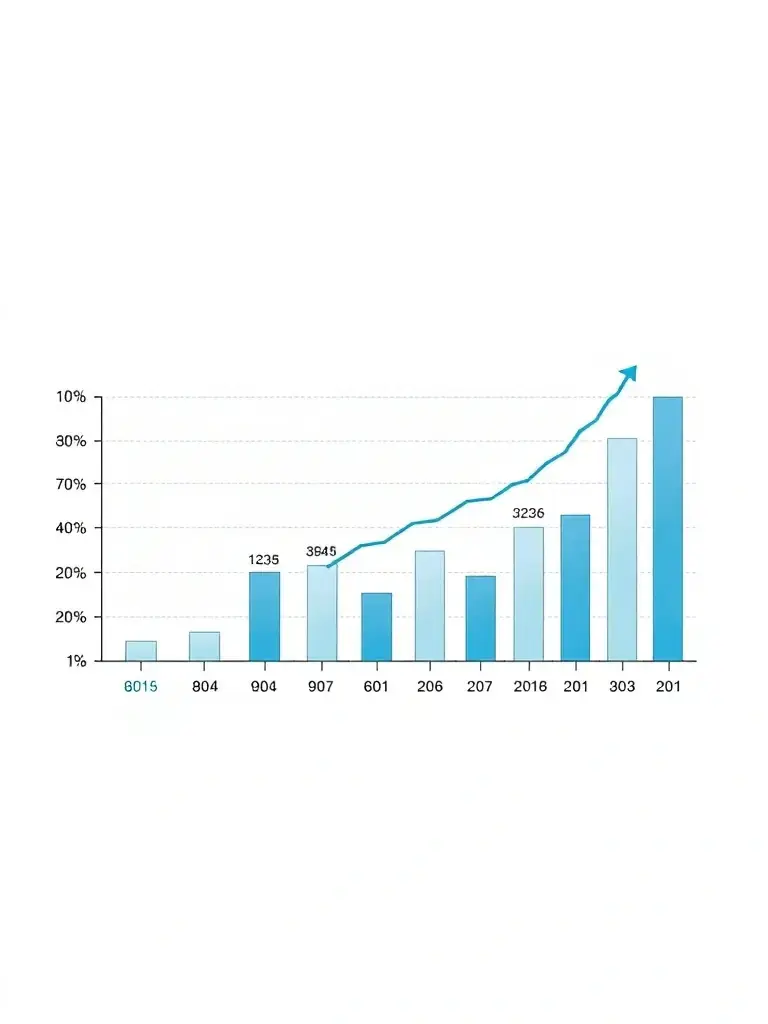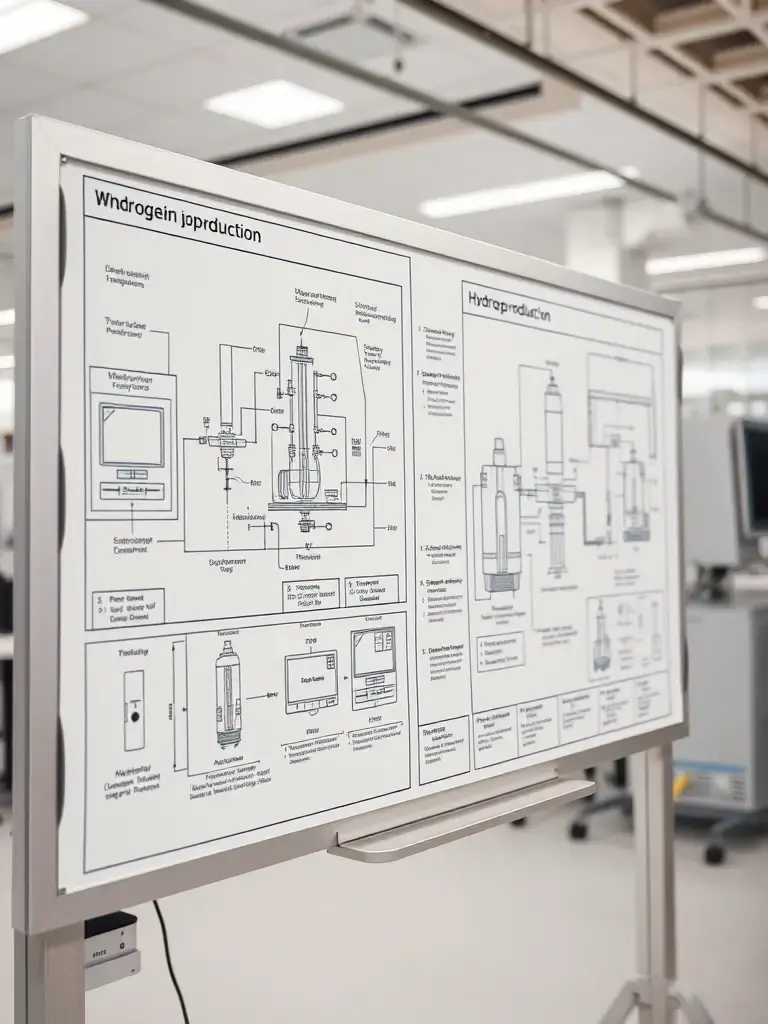Unlock Hydrogen Plant Setup in India
Pricing & Packages
Choose the best plan for your Business needs and get started today.
Premium eBook
₹ 500
Ideal for initial research and quick reference.
- Comprehensive eBook
- Well Researched
- Delivery: Instant Download
- Regular updates
- Case studies & success stories
- Format: PDF
- Payment: 100% Advance
- Support: None
- Language: English, Hindi, Bengali, Marathi, Telugu
Bankable Report
₹ 15000
Perfect for MSMEs, Startups, Consultants with detailed insights.
- Project Report for Bank Loan
- CMA Data in Excel
- Research: Industry-specific
- Projected Financials – 5 Years
- Comprehensive Editable Report
- Premium eBook
- We make your Project Report as per your need – Get it in 5–6 days.
- Payment: 20% Now, 80% on Delivery
- Support: WhatsApp, Email, Call
- 6 Revisions (6 months)
Investor Plan
₹ 25000
Comprehensive report with investor-ready materials.
- Well-Researched, Fully Editable Report
- Research: Market & Competitor Analysis
- CMA Data in Excel
- Projected Financials – 7 Years
- Pitch Deck in PPT
- Advanced Financial Modeling
- Geographic Analysis
- 30-min Consultation
- Delivery in 7-10 Business Days
- Payment: 20% Now, 80% on Delivery
- Support: WhatsApp, Email, Call, Zoom
- Unlimited Revisions (1 year)
eBook Overview
Standard Overview
Premium Overview
Contents of Blog Post
Hydrogen Gas Plant Setup in India: A Comprehensive Guide to Green Energy Transition
Setting up a hydrogen gas plant setup in India involves understanding the market potential, technology options, investment requirements, and government support available. This guide provides a step-by-step overview for investors and entrepreneurs looking to capitalize on India’s push towards green hydrogen, a crucial component of the country’s green energy transition.
Key Takeaways
India aims to become a leader in green hydrogen production, targeting an annual output of 5 million tonnes by 2030 under the National Green Hydrogen Mission, enhancing energy security and promoting export opportunities.
The establishment of hydrogen gas plants requires substantial investment in infrastructure, machinery, and operational resources, with significant government incentives available to support growth in the sector.
Various hydrogen production technologies, including green, grey, and blue hydrogen, are critical for India’s green transition, with a strong emphasis on integrating renewable energy to lower carbon emissions and enhance sustainability.
Introduction
India’s journey towards green energy is gaining momentum, and hydrogen is emerging as a key pillar in this transition. With the country’s growing demand for clean energy and the pivotal role hydrogen plays in India’s green future, the stage is set for significant developments in the hydrogen industry.
This comprehensive guide offers investors, entrepreneurs, and consultants a detailed roadmap for establishing a hydrogen gas plant in India. It covers everything from the basics of hydrogen, market potential, production technologies, investment requirements, to government support, providing all necessary components for embarking on this green energy mission.
What is Hydrogen and Why It Matters
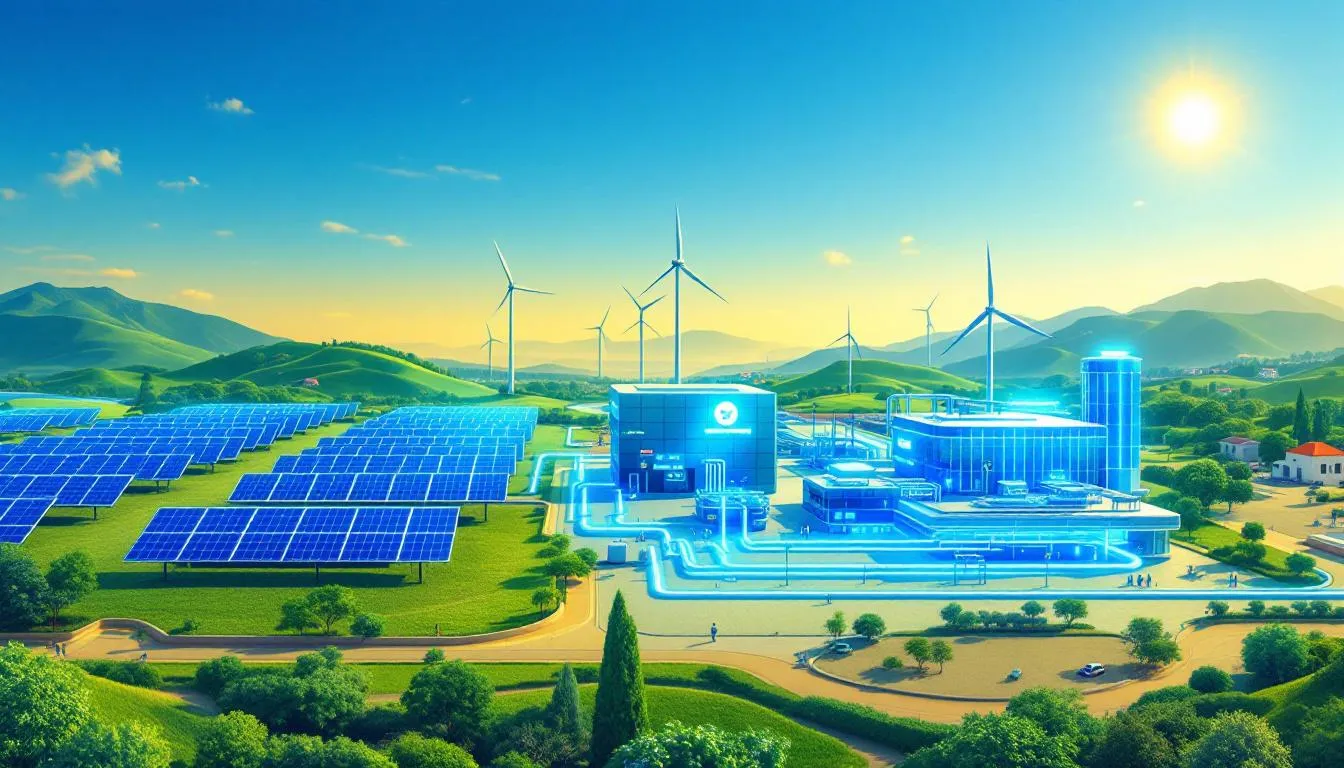
Hydrogen, the most abundant element in the universe, comes in various forms, each with distinct production methods and environmental impacts:
Green hydrogen is produced through water electrolysis using renewable energy sources, making it a clean alternative to fossil fuels. Green hydrogen can also be produced from renewable sources such as biomass, which plays a significant role in sustainable hydrogen production.
Grey hydrogen is derived from natural gas through steam methane reforming (SMR) without carbon capture, resulting in significant carbon emissions.
Blue hydrogen is produced similarly to grey hydrogen but with carbon capture and storage, reducing its environmental footprint.
India’s National Green Hydrogen Mission aims to harness the potential of green hydrogen to achieve energy independence by 2047 and net-zero emissions by 2070. This mission underscores the importance of hydrogen in decarbonizing various sectors, including transportation, industry, and power generation.
Global and Indian market trends indicate a growing emphasis on green hydrogen projects. As countries strive to meet climate goals, green hydrogen is gaining traction as a sustainable and versatile energy source. Producing green hydrogen and creating green hydrogen hubs can position India as a leader in the green hydrogen transition.
Market Potential of Hydrogen in India
Industrial Demand: India’s industrial landscape presents significant opportunities for green hydrogen production. Key sectors such as petroleum refineries, fertilizers, steel, and transport have a high demand for hydrogen, making them ideal candidates for green hydrogen adoption.
Mobility and Decentralized Energy: Hydrogen fuel cells offer promising prospects for mobility and decentralized energy applications, further expanding the market potential of hydrogen in India.
National Green Hydrogen Mission Targets: The National Green Hydrogen Mission sets ambitious targets for hydrogen production and export, including:
Aim to annually produce 5 million tonnes of green hydrogen by 2030, positioning India as a major player in the global market.
Establish a strategic hydrogen innovation partnership between public and private sectors to drive the green hydrogen transition.
Create green hydrogen hubs.
Foster the development of green hydrogen projects.
Export Opportunities: India’s proactive stance in the hydrogen sector is not just about meeting domestic demand but also tapping into export opportunities. As global demand for green hydrogen rises, India stands to benefit significantly from exporting green hydrogen and related technologies, bolstering its economic growth and energy security.
Hydrogen Production Technologies
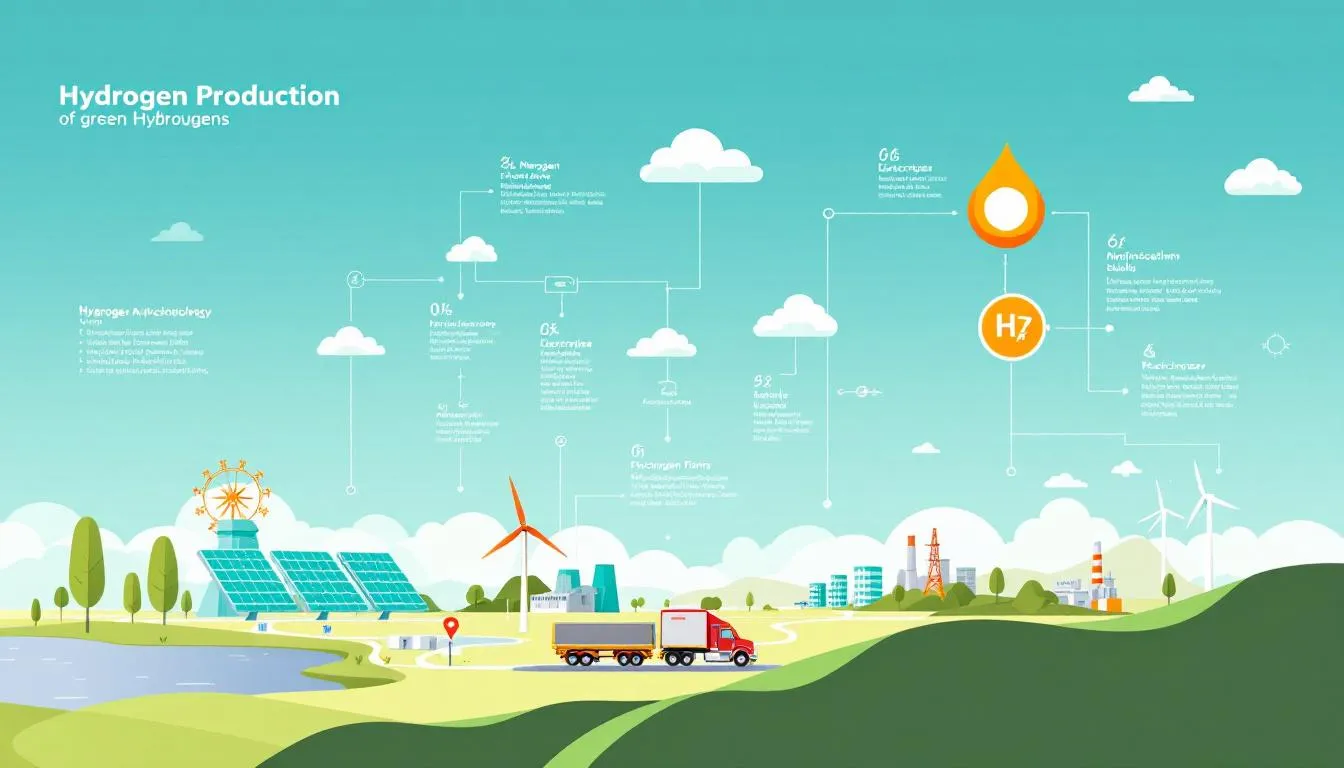
Green Hydrogen: Produced via electrolysis, green hydrogen involves splitting water into hydrogen and oxygen using electricity generated from renewable sources such as solar and wind. This method is environmentally friendly and supports India’s renewable energy goals.
Grey Hydrogen: This hydrogen is produced through steam methane reforming (SMR) of natural gas. While it is cost-effective, it emits significant carbon dioxide, contributing to environmental pollution.
Blue Hydrogen: A cleaner alternative to grey hydrogen, blue hydrogen also uses SMR but incorporates carbon capture and storage technologies to reduce carbon emissions. It serves as a transitional solution toward greener options.
Cost and Sustainability: Green hydrogen is sustainable but currently more expensive due to high costs of renewable energy and electrolyzer technologies. Grey hydrogen is cheaper but environmentally harmful, whereas blue hydrogen offers a balance but requires substantial infrastructure for carbon capture.
Technological Advancements: There is a strong focus on developing and scaling cutting-edge technologies to improve hydrogen production efficiency, reduce costs, and enhance sustainability as India advances its green hydrogen transition.
Investment Required for a Hydrogen Gas Plant
Setting up a hydrogen gas plant involves significant investment, with key cost heads including land acquisition, electrolyzer procurement, civil infrastructure, and utilities. The initial outlay varies based on the plant’s production capacity and electrolyser capacity, with small setups requiring around ₹10 crore and large-scale plants demanding investments up to ₹100 crore.
In addition to capital expenditure, working capital considerations are crucial for the plant’s operational viability. This includes costs for:
Raw materials
Utilities
Maintenance
Labor A well-planned investment strategy that balances capital and operational costs is essential for the long-term profitability of a hydrogen gas plant.
Machinery and Equipment Needed
Electrolyzers: The core machinery includes various types such as Proton Exchange Membrane (PEM) and Alkaline electrolyzers, essential for converting water into hydrogen and oxygen through electrolysis.
Storage Tanks: These are critical for safely storing the produced hydrogen before distribution or use.
Compressors: Used to compress hydrogen gas for efficient storage and transportation.
Dispensers: Equipment necessary for distributing hydrogen to end-users or vehicles.
Automation and Monitoring Systems: Vital for ensuring efficient and safe plant operations by enabling real-time tracking of production metrics, safety parameters, and overall plant performance.
Supplier Options: Both domestic manufacturing and international suppliers offer a range of machinery and equipment, allowing operators to select options best suited to their specific requirements.
Raw Materials and Utilities
Electricity Supply: Electricity is the primary raw material for green hydrogen production, with renewable sources like solar and wind being the preferred options. Power Purchase Agreements (PPAs) with renewable energy providers can ensure a steady and cost-effective supply of electricity for the electrolyzers.
Water Quality: Water is another critical input, requiring purification to meet the standards needed for electrolysis.
Utility Consumption: Monthly utility consumption estimates are vital for financial planning, covering electricity, water, and other operational utilities.
Resource Optimization: Optimizing the procurement and utilization of these resources is essential for maintaining the plant’s production capacity and ensuring cost-efficiency.
Government Support and Incentives
National Hydrogen Mission: The Indian government’s National Hydrogen Mission provides an enabling policy framework and distinct financial incentive mechanisms designed to attract investments in green hydrogen production.
Production Linked Incentive (PLI) Scheme: This scheme offers subsidies specifically for hydrogen production, covering capital costs, land acquisition, and electricity expenses to reduce the financial burden on investors.
The government is also considering implementing a Green Hydrogen Consumption Obligation, modeled after the existing Renewable Purchase Obligation, to further promote the use of renewable energy in key industries.
State-wise Subsidies: Various states provide additional subsidies and support programs such as Startup India and MSME schemes, enhancing the feasibility and attractiveness of hydrogen projects at the regional level.
Cost Reduction: These combined incentives aim to lower the initial outlay and operational costs, making hydrogen production a more viable and attractive investment opportunity in India.
Licensing and Regulatory Approvals
Mandatory Licenses: Establishing a hydrogen gas plant requires obtaining several essential licenses such as pollution control certificates, PESO (Petroleum and Explosives Safety Organization) licenses, and factory licenses.
Environmental Clearance: Securing environmental clearance is crucial to ensure compliance with safety norms and to minimize the environmental impact of the plant.
Registration Benefits: Registering under programs like Startup India, DPIIT, and Udyam can provide additional benefits and recognition for the hydrogen gas plant project.
Profitability and Revenue Model
Cost vs. Market Price: The profitability of a hydrogen plant hinges on the cost per kilogram of hydrogen produced versus the market selling price.
Additional Revenue Streams: By-products like oxygen and carbon credits can also be sold, providing additional revenue streams.
ROI Analysis: Analyzing return on investment (ROI) for different plant capacities helps in understanding the financial viability and break-even period of the investment.
Market Dynamics Understanding: A thorough understanding of the market dynamics and strategic pricing is essential to maximize profitability.
Diversification of Revenue: Diversifying revenue sources is a key strategy to achieve long-term financial success in the hydrogen industry.
Production Cost Optimization: Optimizing production costs is critical for sustaining profitability and competitiveness in the market.
Common Challenges and Mitigation
Technology Dependency and High OPEX: Setting up and operating a hydrogen gas plant involves reliance on advanced technologies, which can lead to high operational expenditures.
Regulatory Delays: Obtaining necessary approvals and licenses can be time-consuming, causing delays in project timelines.
Resource Availability: Securing adequate water and land resources for the plant can be challenging due to scarcity and regulatory constraints.
Safety and Training: Ensuring the safety of personnel handling hydrogen and providing comprehensive training is critical to prevent accidents and ensure smooth operations.
Mitigation Strategies: To address these challenges, invest in advanced technologies to reduce OPEX, engage proactively with regulatory bodies to expedite approvals, and implement robust training and safety programs for staff.
Proactively addressing these challenges can significantly minimize the risks associated with hydrogen production.
Step-by-Step Setup Process
Business Plan: Drafting a detailed business plan that outlines the objectives, financial projections, and operational strategies for the hydrogen gas plant.
Location Selection: Choosing a suitable location that meets logistical, environmental, and regulatory requirements for setting up the plant.
Licensing: Obtaining all necessary licenses and permits required for legal operation, including safety and environmental clearances.
EPC Contractor Engagement: Hiring Engineering, Procurement, and Construction (EPC) contractors responsible for the plant’s construction and commissioning.
Vendor Selection: Selecting reliable vendors for machinery and equipment to ensure quality, efficiency, and compatibility with the plant’s needs.
Project Timeline: Managing the entire setup process, which typically spans several months, with meticulous planning and execution to meet deadlines and budget.
National Green Hydrogen Mission
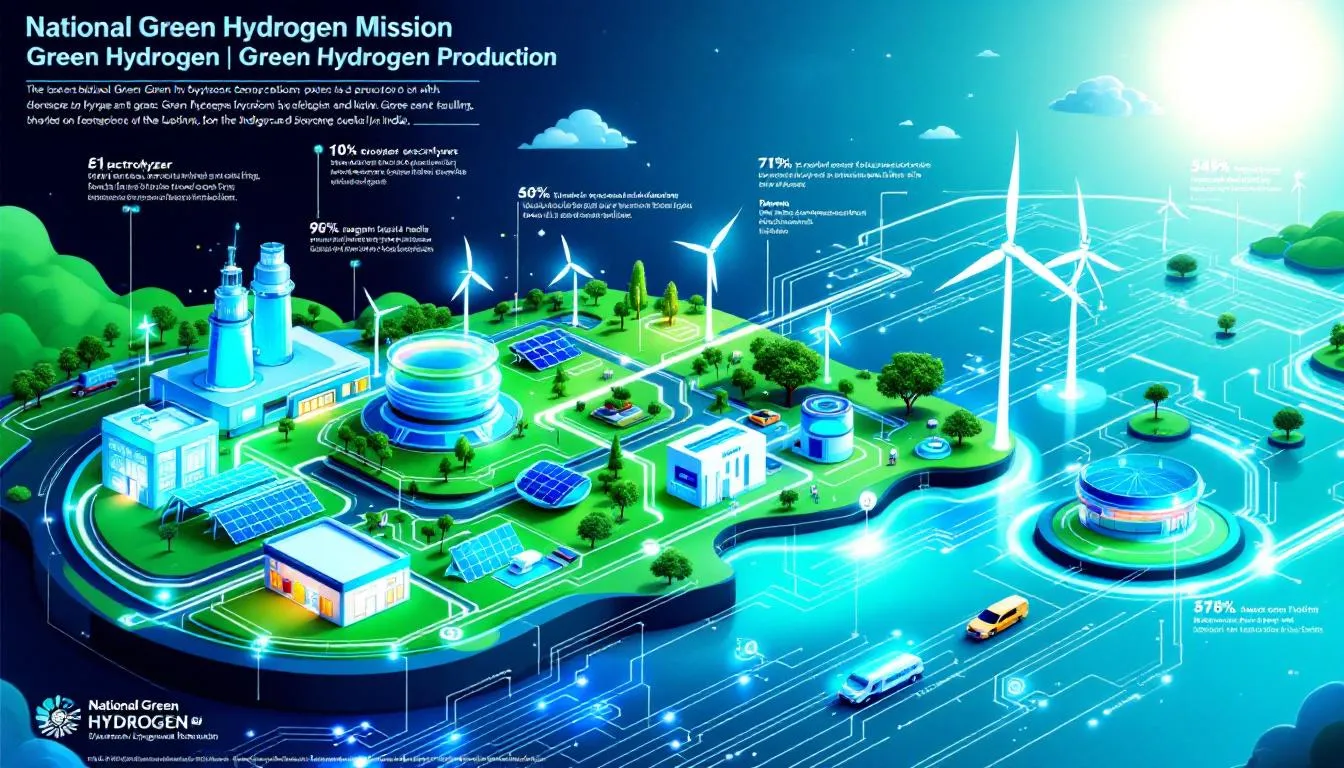
The National Green Hydrogen Mission is a cornerstone of India’s strategy to achieve energy independence and net-zero emissions. The mission aims to produce 5 million tonnes of green hydrogen annually by 2030, significantly decarbonizing India’s economy and reducing greenhouse gas emissions. Other components of the mission include Public Awareness, Stakeholder Outreach, International Cooperation, and targeted financial allocations for different program segments.
This ambitious initiative is expected to attract investments exceeding ₹8 lakh crore and enhance the hydrogen supply chain infrastructure, including pipelines and storage facilities. The mission is projected to result in a substantial cumulative reduction in fossil fuel imports and greenhouse gas emissions over the coming years.
Strategic Interventions
Strategic interventions under the National Green Hydrogen Mission include various incentive schemes to encourage investments in hydrogen production. The government has allocated a substantial budget to support the development of hydrogen technologies and streamline policies to facilitate growth in this sector.
Collaboration through public-private partnerships for research and development is also a key focus, aiming to make India a global leader in hydrogen production and exports.
Public-Private Partnerships
Public-private partnerships play a crucial role in advancing hydrogen projects by pooling resources and expertise within a public private partnership framework. These partnerships foster innovation and accelerate project implementation, as seen in the collaboration between the Solar Energy Corporation of India (SECI) and H2Global Stiftung.
Such collaborations are essential for developing hydrogen technology and infrastructure, positioning India as a significant player in the global hydrogen market.
Skill Development Programs
Skill development is a vital component of the National Green Hydrogen Mission, aiming to build a proficient workforce for the hydrogen sector. Training programs and initiatives are being introduced to equip individuals with the necessary skills and knowledge to operate and manage hydrogen plants efficiently.
These programs are crucial for ensuring the successful implementation and sustainability of hydrogen projects across India.
Infrastructure and Supply Chain Development
Developing robust infrastructure and supply chains is essential for the growth of the hydrogen sector in India. The focus is on creating hydrogen hubs that connect producers and users, optimizing costs and infrastructure.
However, challenges such as land and water scarcity need to be addressed to scale green hydrogen production effectively on a commercial scale.
Hydrogen Storage Solutions
Effective hydrogen storage solutions are critical for maximizing hydrogen’s potential as a green energy source. Two primary storage methods are being explored: compressed gas and liquid hydrogen.
Compressed gas storage maintains hydrogen in a gaseous form at high pressures, ideal for applications requiring rapid access to hydrogen, such as fuel cells in vehicles. Liquid hydrogen storage, with its higher energy density, is better suited for applications where maximizing payload is critical, such as in transport.
The choice between these storage methods depends on specific application requirements, including space, weight, and access frequency.
Transportation and Distribution Networks
Efficient transportation and distribution networks are essential for delivering hydrogen from production sites to consumers. Significant investments are being made in infrastructure development by both public and private sectors. Dedicated pipelines, designed to minimize leakage and enhance safety, are a primary mode of hydrogen transport.
Additionally, tankers are used to distribute hydrogen over longer distances, ensuring a reliable supply chain from production to end-users.
Renewable Energy Integration
Integrating renewable energy sources is crucial for sustainable hydrogen production, reducing reliance on non-renewable energy inputs. The process of electrolysis, where electricity generated from renewable sources like solar and wind is used to produce hydrogen, aligns with India’s renewable energy goals.
Programs like the sight program initiative provide specific incentive schemes for producing green hydrogen and manufacturing electrolysers incentive, promoting the use of renewable energy in hydrogen production.
Case Studies of Hydrogen Projects in India
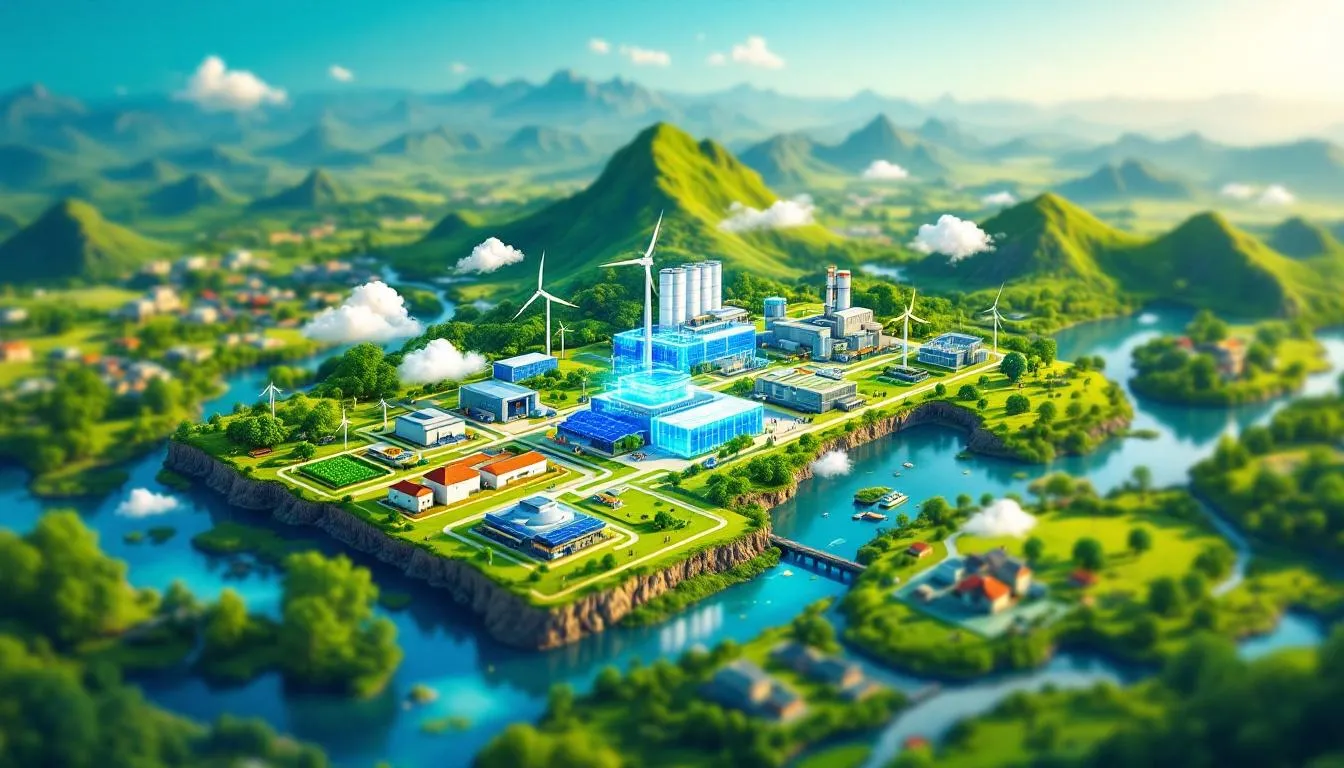
India is home to several successful hydrogen projects, showcasing the country’s commitment to adopting green energy solutions. These case studies highlight the innovative approaches and strategic investments that are driving the green hydrogen industry forward in India.
ReNew Power’s Green Hydrogen Plant
ReNew Power is emerging as a significant contributor to green hydrogen production in India. The company’s initiatives focus on harnessing new and renewable energy sources effectively to produce green hydrogen.
ReNew Power’s pilot projects cover various sectors, including:
Steel
Mobility
Decentralized energy applications These projects advance the green hydrogen industry and support India’s sustainability and energy independence goals.
Acme Cleantech’s Hydrogen Projects
Acme Cleantech has successfully launched the world’s first fully integrated Green Ammonia project in Rajasthan, demonstrating the viability of green hydrogen solutions. The company aims to establish a portfolio of 10 MMTPA in green ammonia production by 2032, significantly contributing to India’s green hydrogen goals and showcasing the potential of cutting-edge technologies in the hydrogen sector.
SECI’s Role in Hydrogen Initiatives
The Solar Energy Corporation of India (SECI) plays a pivotal role in facilitating and promoting hydrogen projects across the country. SECI’s collaboration with various stakeholders ensures the successful implementation of India’s Green Hydrogen Mission, providing essential support and funding for hydrogen initiatives in energy sectors.
Economic and Environmental Impact
The hydrogen production initiative in India aims to bolster economic performance while facilitating a cleaner environment. Compliance with standards such as IS 16509:2020 ensures safety and performance in hydrogen generation.
Thorough assessments of potential safety risks associated with hydrogen storage and transport are mandatory for obtaining permits, ensuring the safe operation of hydrogen facilities.
Job Creation and Economic Growth
The hydrogen sector in India is projected to create numerous employment opportunities, fostering overall economic development. The Indian government targets the creation of approximately 600,000 jobs by 2030 through the National Green Hydrogen Mission.
Initiatives by companies like ReNew Power not only aim for substantial job creation but also significantly reduce carbon emissions through green hydrogen production.
Reduction in Fossil Fuel Imports
Hydrogen production in India is set to reduce imported fossil fuels significantly, contributing to a reduced dependence on fossil fuel imports. The National Green Hydrogen Mission targets a reduction of over €11.4 billion in fossil fuel imports by 2030 by leveraging hydrogen as a cleaner alternative.
This shift is expected to generate substantial savings in energy imports, estimated between $246 billion and $358 billion by 2050, further enhancing India’s energy security.
Emission Reductions
Integrating renewable energy sources into hydrogen production processes significantly reduces carbon emissions, enhancing sustainability. ReNew Power’s green hydrogen facility, which operates using renewable energy sources, exemplifies this by significantly reducing emissions compared to traditional methods.
The National Green Hydrogen Mission targets nearly 50 MMT of annual greenhouse gas emissions reduction by 2030, contributing to India’s carbon neutrality goals.
Future Outlook and Challenges
India is emerging as a key player in the global hydrogen sector, with various projects showcasing innovative approaches to hydrogen production.
However, the journey is not without challenges, including international competition and policy hurdles.
Market Potential and Export Opportunities
Growing Demand Across Sectors: India anticipates significant growth in green hydrogen demand across transportation, shipping, steel, and other emerging end-use sectors.
Strategic Export Position: The country aims to establish itself as a major exporter of green hydrogen, leveraging its renewable energy resources to meet global market needs.
Economic Growth and Energy Security: Expanding hydrogen production and exports will contribute to India’s economic development while reducing dependence on imported fossil fuels.
Development of Green Hydrogen Hubs: India plans to create green hydrogen hubs to optimize production and distribution, supporting both domestic consumption and export capabilities.
Supportive Policy Framework: The National Green Hydrogen Mission and related initiatives provide an enabling policy environment to foster production pathways and boost export opportunities.
Technological Advancements
Integration of Renewable Energy: One of the most significant technological advancements in hydrogen production is the integration of renewable energy sources such as solar and wind power with electrolysis. This integration allows for the generation of green hydrogen without carbon emissions, making the process more sustainable and environmentally friendly.
Efficiency Improvements in Electrolysers: Advances in electrolyser technology, including Proton Exchange Membrane (PEM) and Alkaline electrolysers, are improving the efficiency of hydrogen production. These improvements reduce electricity consumption per kilogram of hydrogen produced, thereby lowering overall production costs.
Development of Cutting-Edge Technologies: Research and development efforts under initiatives like the Strategic Hydrogen Innovation Partnership (SHIP) are driving innovation in hydrogen production technologies. This includes exploring new materials, catalysts, and system designs that enhance durability and performance of electrolysers.
Cost Reduction Through Scale: Technological progress is enabling the scaling up of hydrogen production facilities, which leads to economies of scale. Larger plants with higher production capacities benefit from reduced per-unit costs, making green hydrogen more competitive with conventional fuels.
Advanced Monitoring and Automation: Implementation of automation and real-time monitoring systems ensures optimal operation of hydrogen plants. These technologies help in predictive maintenance, improving safety, and maximizing production efficiency.
Integration with Energy Storage Systems: Combining hydrogen production with energy storage solutions, such as battery energy storage systems (BESS), helps manage the intermittency of renewable energy sources. This integration ensures a steady supply of electricity for continuous hydrogen production.
Research on Alternative Production Pathways: Beyond electrolysis, ongoing research is exploring alternative green hydrogen production methods, including photoelectrochemical water splitting and biological processes, which may offer higher efficiencies or lower costs in the future.
Supportive Policy and Funding: Government initiatives provide financial incentives and regulatory support that foster technological advancements. Funding for pilot projects and R&D accelerates the development and commercialization of innovative hydrogen technologies.
Focus on Indigenous Manufacturing Capabilities: Emphasizing domestic production of electrolysers and related equipment is crucial for reducing dependency on imports. This focus promotes technology transfer, skill development, and cost reduction within India’s hydrogen ecosystem.
Environmental Impact Reduction: Technological advancements contribute to minimizing the carbon footprint of hydrogen production by enabling cleaner processes and reducing reliance on fossil fuels, aligning with India’s climate goals.
Policy and Regulatory Hurdles
International Competition: The hydrogen sector in India faces significant challenges due to competition from countries offering substantial subsidies for hydrogen production, which can impact India’s market position.
Subsidy Disparities: Variations in subsidy levels across countries create an uneven playing field, making it difficult for Indian producers to compete globally without similar support mechanisms.
Regulatory Complexity: Navigating complex and evolving regulatory frameworks can delay project approvals and increase compliance costs for hydrogen producers.
Need for Harmonization: There is a pressing need to harmonize policies and standards at both national and international levels to facilitate smoother trade and cooperation in the hydrogen market.
Incentive Alignment: Aligning financial incentives with long-term sustainability goals is essential to encourage investments and innovation in green hydrogen technologies.
Policy Stability: Ensuring stable and predictable policies will boost investor confidence and support the sustained growth of the hydrogen industry in India.
Addressing Infrastructure Gaps: Overcoming regulatory hurdles related to infrastructure development, such as pipeline networks and storage facilities, is crucial for scaling up hydrogen production and distribution.
Stakeholder Engagement: Continuous engagement with industry stakeholders, policymakers, and international partners is vital to identify challenges and formulate effective regulatory responses.
Capacity Building: Strengthening institutional capacities to manage and implement hydrogen-related policies will enhance regulatory efficiency and sector growth.
Future Policy Roadmap: Developing a clear and comprehensive policy roadmap will guide the hydrogen sector’s evolution, addressing emerging challenges and leveraging opportunities.
Conclusion
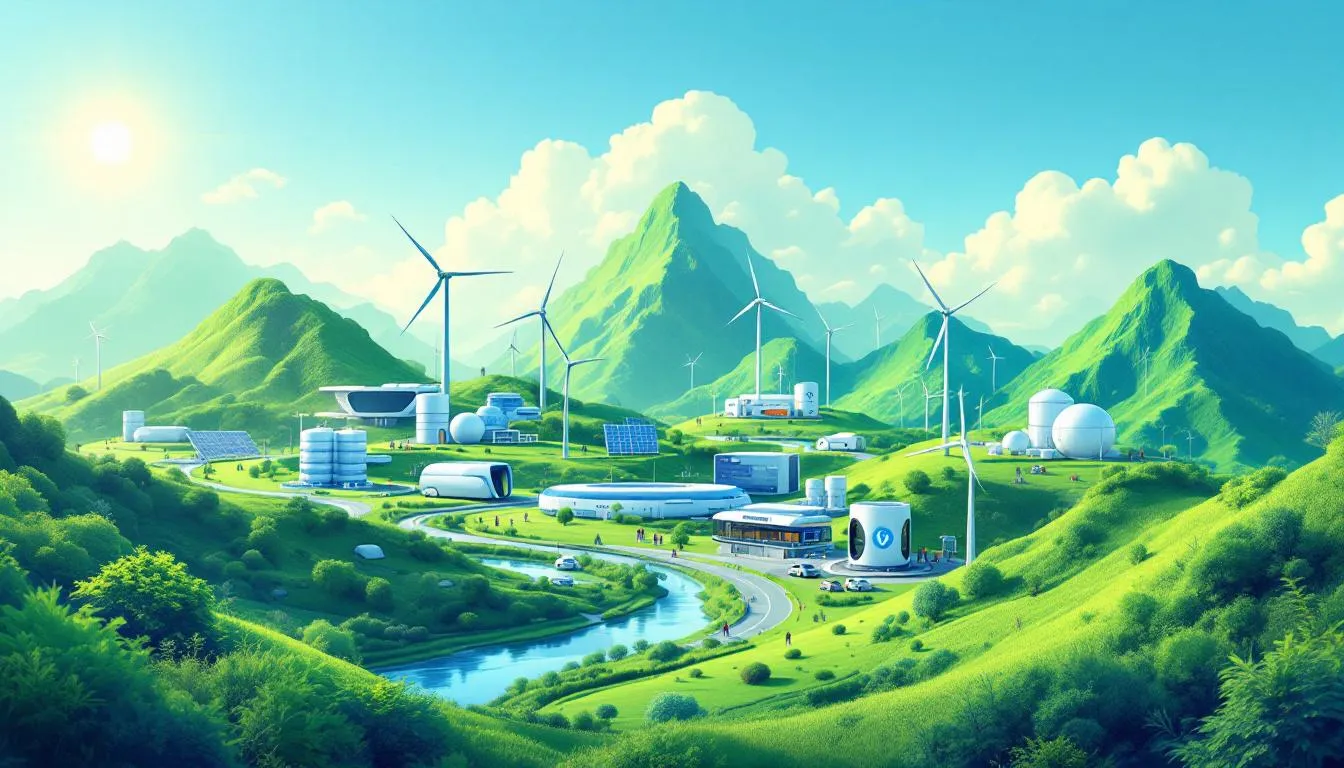
Hydrogen is the future of clean energy in India, with the government fully supporting the transition through strategic frameworks and policies. A well-planned investment in this sector today could lead to long-term profitability and sustainable growth.
As the mission progresses, India is poised to become a global hub for green hydrogen production. Embracing innovative methods, fostering public-private partnerships, and investing in technology development, India is well on its way to achieving its green energy goals.
In summary, setting up a hydrogen gas plant in India presents a promising opportunity for investors and entrepreneurs. With government support, technological advancements, and significant market potential, the hydrogen sector is set to drive India’s green energy transition. Embracing this opportunity can lead to substantial economic and environmental benefits, paving the way for a sustainable future.
Frequently Asked Questions
What are the primary types of hydrogen production methods?
The primary types of hydrogen production methods are green hydrogen through electrolysis, grey hydrogen via steam methane reforming of natural gas, and blue hydrogen, which incorporates carbon capture and storage in the SMR process.
What is the National Green Hydrogen Mission?
The National Green Hydrogen Mission seeks to produce 5 million tonnes of green hydrogen annually by 2030, which will play a crucial role in decarbonizing India’s economy and lowering greenhouse gas emissions.
What are the key cost heads for setting up a hydrogen gas plant?
The key cost heads for setting up a hydrogen gas plant include land acquisition, electrolyzer procurement, civil infrastructure, utilities, and working capital for operational expenses. Addressing these costs is crucial for the successful establishment of the plant.
How does the Indian government support hydrogen production?
The Indian government actively promotes hydrogen production by implementing the National Hydrogen Mission, the Production Linked Incentive (PLI) Scheme, and various subsidies at the state level, alongside initiatives such as Startup India and MSME schemes. These efforts aim to foster growth in the hydrogen sector.
What are the potential challenges in setting up a hydrogen gas plant?
Setting up a hydrogen gas plant may encounter challenges such as technology dependency, regulatory delays, water availability, land zoning issues, and safety concerns. It is crucial to address these by investing in advanced technologies, engaging with regulatory bodies early, and ensuring proper training for the workforce.
Expert Insights & Success Stories


